Viewing: Blog Posts Tagged with: Houses, Most Recent at Top [Help]
Results 1 - 24 of 24
Blog: the dust of everyday life (Login to Add to MyJacketFlap)
JacketFlap tags: houses, Jon Buller, Add a tag
Blog: Playing by the book (Login to Add to MyJacketFlap)
JacketFlap tags: Houses, Annette Tison, Talus Taylor, Add a tag
 Back in 2010 I chose a book very dear to my heart in celebration of my 100th post on Playing by the book: Barbapapa’s New House by Annette Tison and Talus Taylor. I am now feeling very old, as this will be my 770th post on Playing by the book and it is celebrating the fact that Barbapapa’s New House is back in print!
Back in 2010 I chose a book very dear to my heart in celebration of my 100th post on Playing by the book: Barbapapa’s New House by Annette Tison and Talus Taylor. I am now feeling very old, as this will be my 770th post on Playing by the book and it is celebrating the fact that Barbapapa’s New House is back in print!
To celebrate this fantastic occasion I was luxuriating in thinking about what I loved and love still about this book. And it is – appropriately enough – the houses, the homes of the barbapapas. 670 posts ago we made a dollshouse that looked like the new Barbabpapa home…

Image taken from my old edition of Barbapapa’s New House

…but this time I was dreaming about the old Barbapapa home, with its romantic turret and fairytale quality.

Image taken from my old edition of Barbapapa’s New House
As a child I longed to live in a house like this one. And when I recently saw that none other than Judith Kerr had lived in something similar as a child (there’s a video of her visiting it here) I sighed wistfully.
Our 1930s ex-council house isn’t nearly as magical, but to bring a bit of that old fashioned charm and beauty into our home I thought I’d create some colouring-in pages based on the Barbapapas gorgeous old house.

Click to download and print the colouring-in sheets:

For larger houses (2 per A4 sheet and much easier for little hands to colour in) use this series:
To make these colouring in sheets I used a series of images I found in the British Library’s Photostream on Flickr . Back in December last year the British Library released over 1 million images from 17th, 18th and 19th century books in their collection, making them available for anyone to use, remix and repurpose.
I’ve previously blogged about some of the vintage children’s book illustrations I found but all the illustrations I used for the Barbapapa colouring in sheets come from Strassburg und seine Bauten. Herausgegeben vom Architekten- und Ingenieur-Verein für Elsass-Lothringen. Mit 655 Abbildungen in Text, etc, published in 1894 by Architekten- und Ingenieur-Verein für Elsass-Lothringen. I used the trace function in Inkscape to create clean(er) black and white images, and the same programme to put them together in order to create my dream street.

Using felt glued to card and googly eyes I created a Barbapapa family and the girls then coloured in the street I’d created. Here’s the final result!



I hope the Barbapapas capture your kids’ imagination just as much as they did mine – there’s so much to love about them from their inventiveness and thoughtfulness to their playfulness. You don’t need to read the books in any set order to enjoy them so if Barbapapas are new to you, please do seek out the gorgeous book that is Barbapapa’s New House and let me know what you think of it.
Thanks got Damyanti and her family for trialling the colouring-in sheets.
Disclosure: I received a free review copy of Barbapapa’s New House from the publisher.
Blog: Playing by the book (Login to Add to MyJacketFlap)
JacketFlap tags: Conflict, Friendship, Cats, Houses, Colours, Jenni Desmond, Add a tag
It’s been a while since I fell in love at first sight, but that’s precisely what happened when I saw the front cover of Red Cat, Blue Cat by debut author/illustrator Jenni Desmond.

The cats’ gorgeously grumpy expressions, the boldness of the image as a whole, the delicate detailing of the birds in flight – it made me catch my breath, nod and smile.
And on turning the pages my sense of excitement and delight only grew. Red Cat, Blue Cat (published later this month in the UK) turns out not only to be beautiful but also witty, original, and jam-packed with joie de vivre; a gentle and humorous exploration of identity, envy and friendship.

Red Cat is fast and bouncy whilst Blue Cat is clever and creative. They share a house but the only other thing they have in common is a secret wish: to be more like the other. Try as they might, all they end up doing is fighting and getting in a big mess. Finally it dawns on them that not only is imitation really the sincerest form of flattery, but happiness also comes more easily if your comfortable with the skin you’re in. A friendship is born based on acceptance and appreciation of difference.
Desmond tells a great story, full of giggles (regular readers of my blog should be delighted to know there are more pants on heads!) as well as having a more thoughtful side. Her illustrations are clean, fresh and eyecatching. Definitely a talent I hope to see much more of in the future.

Inspired by the terraced housing on the title page of Red Cat, Blue Cat we set about creating our own street scene with cats.
We each had a bunch of plain white postcards onto which we drew house fronts. We use origami paper for the roof tiles and added telegraph poles and wires made from barbecue skewers and yarn, and chimney smoke made from toy stuffing fibre.


M added TV aerials made from paper clips and passport photo booth images of us looking out of windows.

I particularly like the bird nesting in the chimney of the house below, and the bicycle in front on the road.

Whilst making our street collage we listened to:
Other activities which would work well alongside Red Cat, Blue Cat include:
So what’s the last book you judged by its cover? Was it one you didn’t read because of the way it looked, or one you bought straight off because the front cover spoke to you?
Blog: Playing by the book (Login to Add to MyJacketFlap)
JacketFlap tags: Houses, Nonfiction Monday, Building, Books in translation, Aleksandra Machowiak, Daniel Mizieliński, Cities/towns, Add a tag
 H.O.U.S.E. by Aleksandra Machowiak and Daniel Mizielinski (translated by Elzbieta Wojcik-Leese) is a book about dreams becoming reality. About imagination taking flight and bearing fruit. It’s also a nonfiction book about architecture. And, it’s wonderful!
H.O.U.S.E. by Aleksandra Machowiak and Daniel Mizielinski (translated by Elzbieta Wojcik-Leese) is a book about dreams becoming reality. About imagination taking flight and bearing fruit. It’s also a nonfiction book about architecture. And, it’s wonderful!
I first came across the work of Aleksandra Machowiak and Daniel Mizielinski when I interviewed Jan Pieńkowski and asked him for some tips about Polish illustrators to look out for. With my recent addiction to books showing homes, houses and buildings through the ages I gave myself the perfect excuse to finally treat myself to H.O.U.S.E.. Why did I wait a year and a half to bring this IBBY Honour list book into our home? I don’t know, but we’re all very glad it now has a place in our house.
H.O.U.S.E. contains details of 35 unusual houses around the world. Illustrations of the actual houses are accompanied by short details on what was the inspiration for them, their location, a key to their construction and a portrait of the architect for each house. Kids love building dens and secret nooks, and this book is basically about adults who do exactly that. No wonder H.O.U.S.E. is so popular with my kids (and I’m 100% sure will excite your kids too).
Each of the houses in question is drawn, rather than photographed. I think this is an interesting decision given that these are houses which actually exist. Why would you draw something in a nonfiction book, when you could take a photo of it instead?

Perhaps the illustrations are somehow more inspiring, especially for children; photographs would make the object concrete and specific, rather than focusing on the imaginative side of the design.

By illustrating the buildings, Machowiak and Mizielinski have also been able to play with colours a lot; perhaps it’s because of the link in my head with Pieńkowski, but H.O.U.S.E. reminds me of the Meg and Mog books’ use of a limited range of flat, saturated, intense col
Blog: Playing by the book (Login to Add to MyJacketFlap)
JacketFlap tags: Houses, Hats, Fire, Building, Sweden, Books in translation, Islands, Elsa Beskow, Moving House, Behaviour (good or bad), Add a tag
 My girls are going through a phase where what they most want to do pretty much all of the time is create miniature landscapes, with building bricks, playmobil, sylvanian family furniture and animals, supplemented by all sorts of knick-knacks that little children have a magical ability to accumulate. These “set-ups” as the girls call them are often inspired by the books we’re reading, and the latest book to be given the landscape makeover is The Children of Hat Cottage by Elsa Beskow.
My girls are going through a phase where what they most want to do pretty much all of the time is create miniature landscapes, with building bricks, playmobil, sylvanian family furniture and animals, supplemented by all sorts of knick-knacks that little children have a magical ability to accumulate. These “set-ups” as the girls call them are often inspired by the books we’re reading, and the latest book to be given the landscape makeover is The Children of Hat Cottage by Elsa Beskow.
In a nutshell, The Children of Hat Cottage tells the sort of tale many parents will recognise – about children trying to be helpful, but ending up making a bigger mess than there was before.
A mother lives with her three young children in a cottage shaped like a hat. One day she has to leave them at home whilst she goes off to buy yarn to make new clothes (isn’t it liberating and exciting how in fairytale-like stories, it’s perfectly possible to leave children at home alone!). Whilst their mother is away the children decide to do something nice for her; they clean the cottage chimney. But one thing leads to another and disaster strikes… their beautiful little hat home burns down.

Fortunately there is a friendly neighbour who comes to the aid of the children, and together they work to save the day. The mother returns, and though initially shocked, everyone shows great composure, makes the best of the situation and out of hard times, lots of love (and a new home) flourishes.
This is a sweet little story with simple, but lovely illustrations. The themes of independence, triumphing over adversity, and keep one’s cool in the face of disaster are great for shared storytime. The fairytale aspects of the setting will delight children who want to believe in gnomes and little spirits, and the poise with which the mother picks up the remains of her burnt-out life and makes the best of it is something I shall aspire to when things are higgledey-piggeldy in my life.
There’s plenty to like about this story, but hand on heart, I don’t believe this is one of Elsa Beskow’s greatest books. The illustrations are somewhat sparse compared to some of her work. They are quick, fluid sketches rather than the detailed images you find in, for example, Around the Year or Children of the Forest. Still, we’ve enjoyed it and it has inspired plenty of play in our family, as I’m sure it will in yours.
Here are some scenes from one of M and J’s “Hat Cottage set-ups”, including a little cottage we made inspired by the one in the illustration above.


 3 Comments on Minature landscapes and giant hats, last added: 2/8/2012
3 Comments on Minature landscapes and giant hats, last added: 2/8/2012
Blog: Playing by the book (Login to Add to MyJacketFlap)
JacketFlap tags: Daily routines, Books / Libraries, Houses, Children's Book Week, Families, Babies, Dancing, Add a tag
Here are our plans for Foundation Stage (3-5 year olds) on our special Book Day, as part of Children’s Book Week. Foundation stage’s theme is “Ourselves”. Please feel free to reuse, adapt and share any of the resources on this page.
Session 1
Book: The Great Big Book of Families by Mary Hoffman and Ros Asquith
Follow up book: Kids by Laurence and Catherine Anholt
Focus activity: (Group) collage with images of children and families
Resources required: pre-cut-out images of people from magazines, either paper and glue or contact paper
Additional Books: Big Book of Families by Laurence and Catherine Anholt, So Much by Trish Cooke and Helen Oxenbury.

A cautionary note: When we chose this activity we didn’t realise how difficult it would be to find plenty of images of non-white people in magazines. Although maybe it shouldn’t have been a surprise it was still a shock to realise how rarely non-white faces feature in “general interest” magazines. I found the best source of inclusive images was council publications! Finding photos of disabled people doing normal every day activities was even more difficult.
Session 2
Book: Wake Up! by Katie Cleminson (which I reviewed here)
Follow up book: Tuck me in! by Dean Hacohen and Sherry Scharschmidt (which I reviewed here)
Focus activity: “Dressing” dolls with a collage made from fabric squares
Resources required: “Dolls” (we’re using this image and printing it on A4 paper), lots of small fabric squares (I cut up some of my remnants I’ve been hanging on to from various sewing projects, but you could ask children to donate old, worn clothes and cut them up if you don’t have your own fabric stash), wool cut into strips, PVA glue, pens/pencils to decorate the dolls and add faces.
Additional Books: Kiss Good Night, Sam by Amy Hest, illustrated by Anita Jeram, All in a Day by Cynthia Rylant, illustrated by Nikki McClure

Session 3
Books: If you’re happ
Blog: Appalachian Morning (Login to Add to MyJacketFlap)
JacketFlap tags: decorating with color, travel, New Orleans, houses, gardens, Add a tag
This post continues our visit to New Orleans. Here are the posts related to our trip:
1) Wonderful Food and Restaurants
2) The French Quarter and Street Bands
3) The Garden District
4) Shopping, Books, and Miscellaneous
5) People and Animals
On our third day in New Orleans, we took a taxi from our hotel to the Garden District and embarked on a walking tour.
The area was originally developed between 1832 to 1900. It may be one of the best preserved collection of historic southern mansions in the United States. The 19th century origins of the Garden District illustrate wealthy newcomers building opulent structures based upon the prosperity of New Orleans in that era. (National Trust, 2006) http://en.wikipedia.org/wiki/Garden_District,_New_Orleans
The homes and yards were beautiful, and as a picture is worth a thousand words, I'll let them speak for themselves.
After our walking tour of the Garden District, we stopped in at the local bookstore located in "The Rink" and purchased some books, which I'll list in a future post.
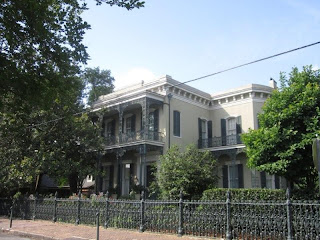 Throughout the neighborhood are beautiful large oak trees and a wide variety of other plants and flowers. Many of the homes have ornate fences and metalwork on the balconies as well as beautiful columns and architectural details. I also loved looking at the paint colors; some houses had subtle variations of colors and others were very bold in their use of color. And everywhere, beautiful trees!
Throughout the neighborhood are beautiful large oak trees and a wide variety of other plants and flowers. Many of the homes have ornate fences and metalwork on the balconies as well as beautiful columns and architectural details. I also loved looking at the paint colors; some houses had subtle variations of colors and others were very bold in their use of color. And everywhere, beautiful trees!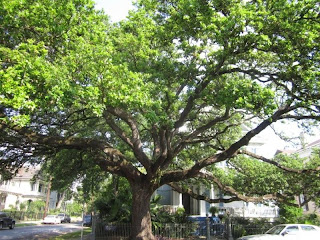
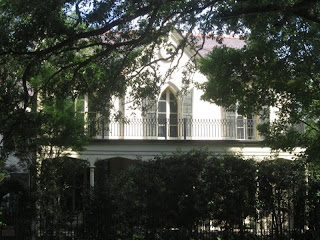
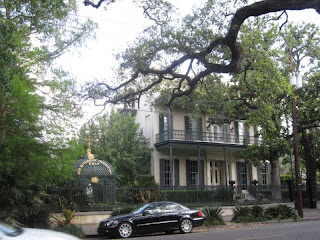
Blog: Playing by the book (Login to Add to MyJacketFlap)
JacketFlap tags: Houses, Boats, Flags, Moving House, Mark Chambers, Abie Longstaff, Pirates, Add a tag
 A month or so ago, I came across some wonderfully inspiring images of a pirate themed bedroom, and as fate would have it the very same week Pirate House Swap by Abie Longstaff, illustrated by Mark Chambers arrived through my letter box. The coincidence couldn’t have been sweeter!
A month or so ago, I came across some wonderfully inspiring images of a pirate themed bedroom, and as fate would have it the very same week Pirate House Swap by Abie Longstaff, illustrated by Mark Chambers arrived through my letter box. The coincidence couldn’t have been sweeter!
Every year the Clark family spend their holidays at home in the city, but this year they decide to try something new – a house swap. Believing they’ve found the perfect seaside retreat they set off, only to be somewhat surprised to discover their holiday home is a pirate galleon.
The family set about learning the pirate ways necessary to enjoy life on the ocean waves, including how to sleep in a hammock and navigate by the stars. Back in the city the pirates are equally intrigued but willing to give the land lubbers’ life a go, learning about the delights of vacuum cleaners and ovens.

By the end of the holidays both families have had a wonderful time but when they return to their homes things are not quite as they were left, and although the Clark family set about putting things back to rights, they do not completely give up their newly adopted pirate ways.
This story is a dream come true for many children! I’m sure my children are not the only ones who would jump at chance to holiday on a real pirate ship.
The illustrations contain lots of fun details for listeners to point out, including cheeky mice on most pages getting up to all sorts of mischief. However, I did feel that some of the details were included more for adult readers than the intended listening audience (for example, the adverts for other possible house swaps are in tiny print and refer to fairy tale locations). If you like the Shrek movies because they contain in-jokes for the grown-ups you’ll like the similar details in Pirate House Swap.
Pirate House Swap is a fun read in the run up to holidays and has a great theme about learning to adapt to new circumstances and to enjoy different ways of life so I’d definitely recommend picking this book up if you find it at the library. That said, Pirate House Swap does not dislodge our favourite pirate book from its place on the shelves – The Night Pirates by Peter Harris, illustrated by Deborah Allwright.
Having seen the photos of the pirate bedroom, and then fallen in love with the idea of living on a pirate galleon, I was set the challenge of helping the girls transform M’s bed into their own pirate ship.
First task was to design a flag to fly. Using an old pillow case and the very-easy-to-use 3 Comments on All aboard, me hearties!, last added: 4/14/2011











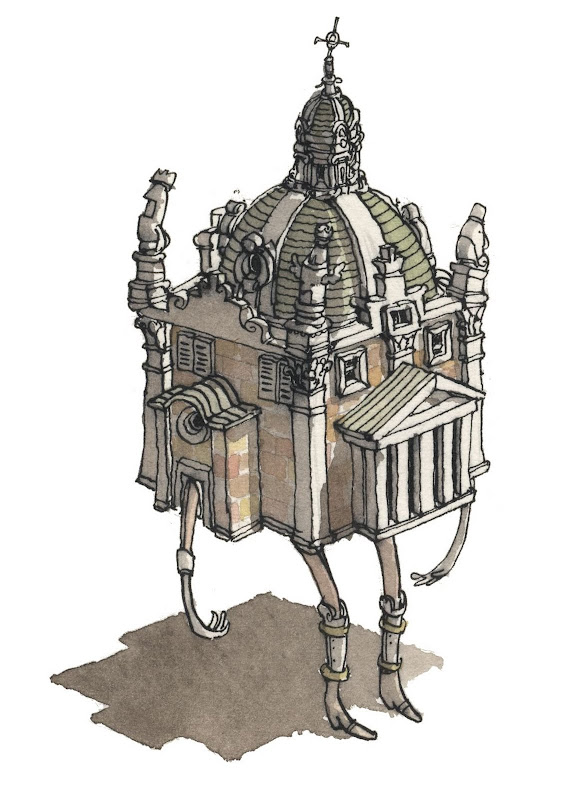



 5 Comments on Barbapapa!, last added: 3/25/2010
5 Comments on Barbapapa!, last added: 3/25/2010



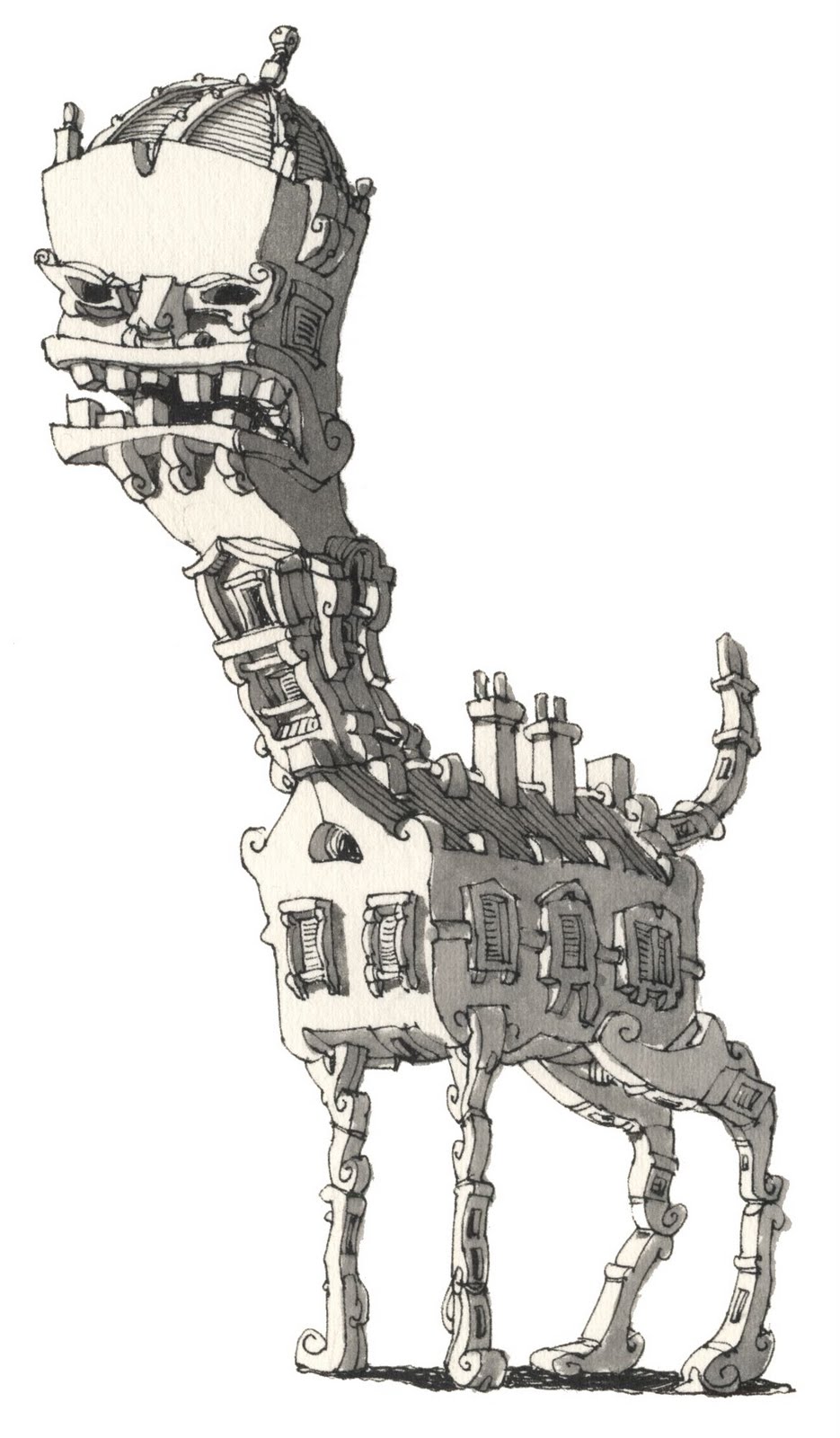
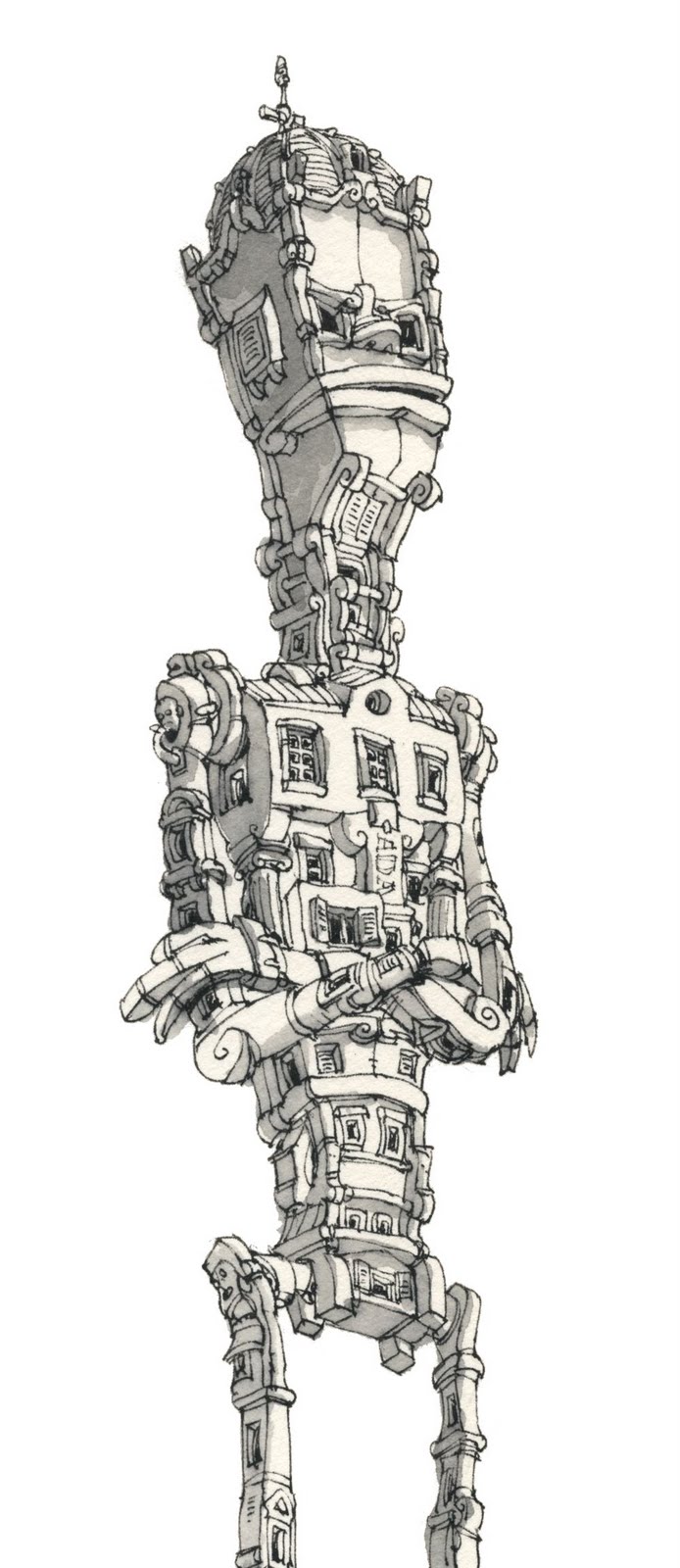
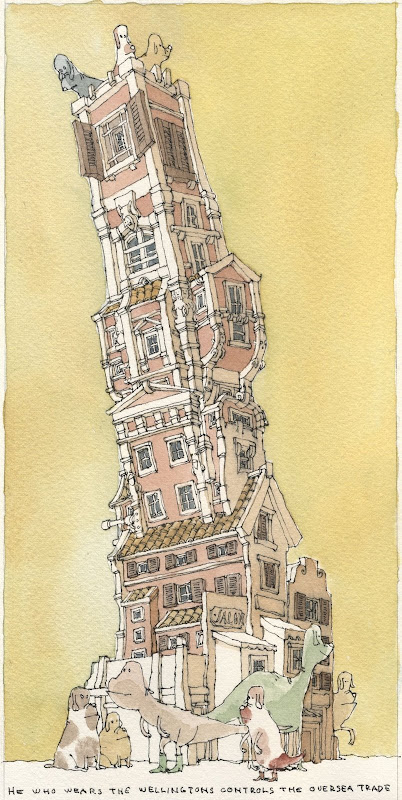


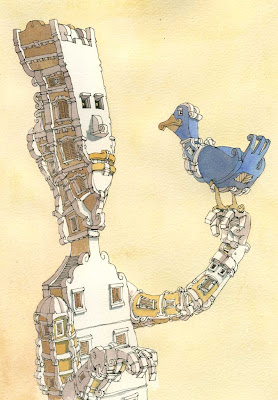
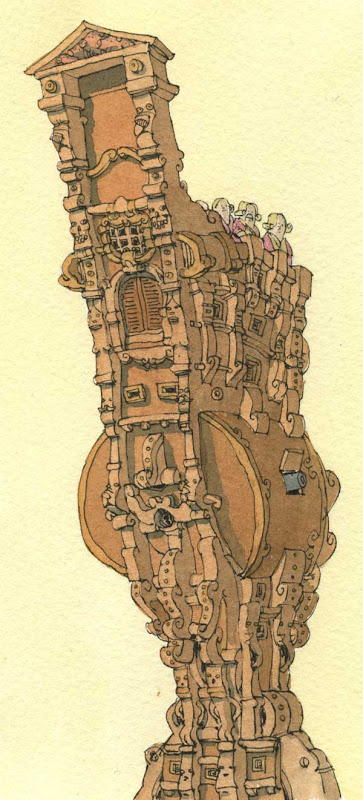

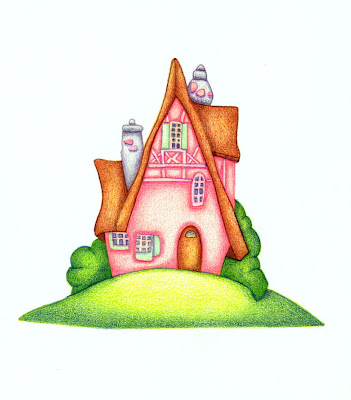
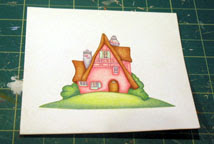
Beautiful! They really do look the part
(Thank you for linking to the originals too!)